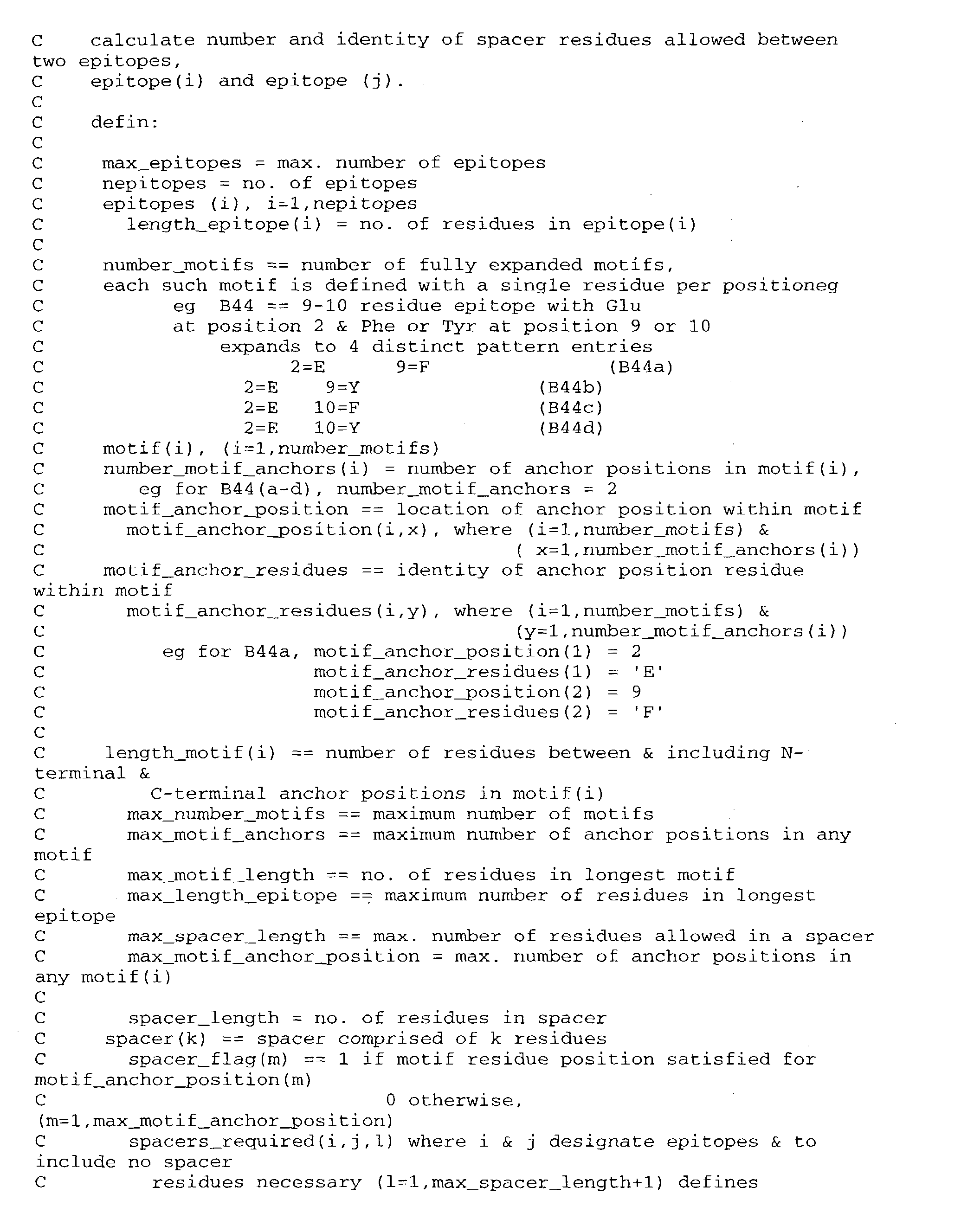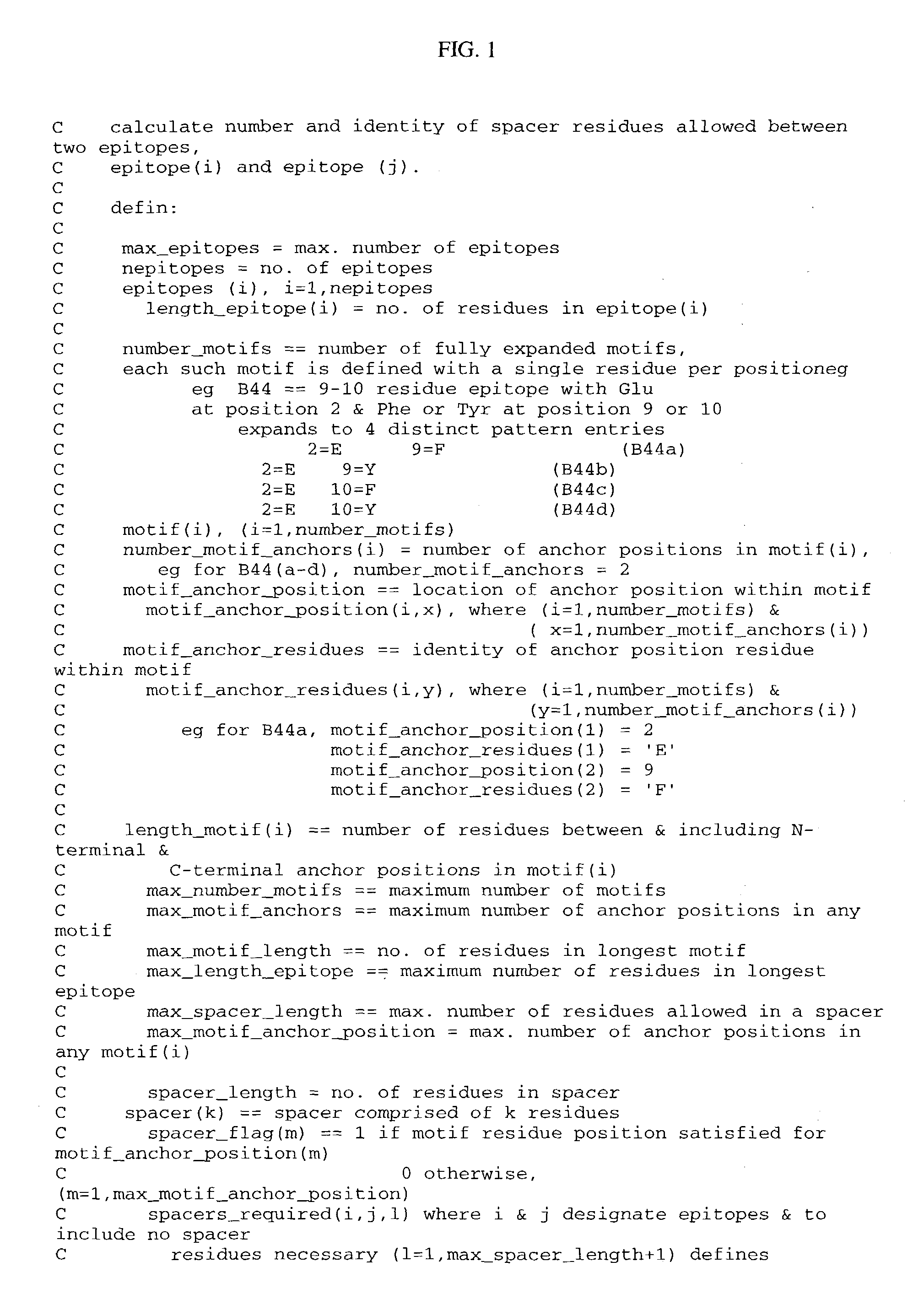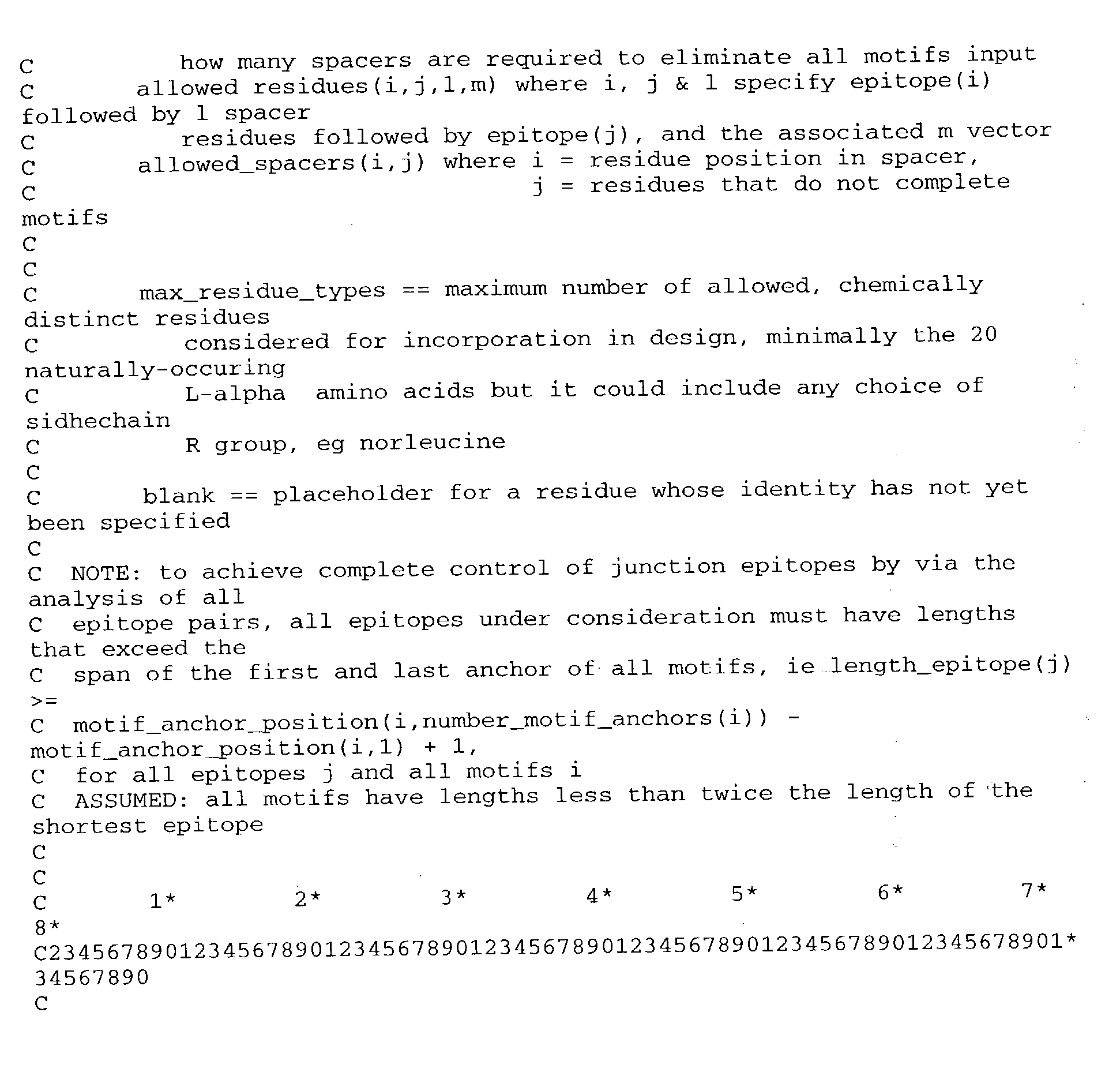Controlling distribution of epitopes in polypeptide sequences
- Summary
- Abstract
- Description
- Claims
- Application Information
AI Technical Summary
Problems solved by technology
Method used
Image
Examples
examples
[0202] In the examples listed below, the number of junctional epitopes are calculated for each possible pairing of the epitopes listed in Table 5 that might be included in a polyepitope, using linkers of zero to six amino acids between epitopes. If there is found to be one or more lengths of linkers which would result in zero junctional epitopes (ie., junctional epitopes being epitopes which span the epitopes of the pair and having a N-terminal anchor residue in the N-terminal epitope, and a C-terminal anchor in the C-terminal epitope) for any given pairing, then linkers of said length must not be used if the creation of junctional epitopes is to be controlled in a. Otherwise, a lindker of said length is allowed.
[0203] The amino acids to be avoided at each position in the linker are determined in consideration of the anchor residues for motifs corresponding to the MHC subtypes of interest occurring in the N-terminal vaccine epitopes C-terminal for motifs corresponding to the MHC sub...
example 1
[0213] Junctional epitopes between epitopes 1 and 1 as a function of linker length. Epitope 1 at N-end, Epitope 1 at C-end
9 K L C P V Q L W V .sub.-- .sub.-- .sub.-- .sub.-- .sub.-- .sub.--K L C P V Q L W V A.sub.2 B.sub.7 A.sub.3 A.sub.2 A.sub.3 A.sub.3 A.sub.2 A.sub.2 A.sub.2 A.sub.2 A.sub.3 A.sub.3 B.sub.27 B.sub.7 B.sub.7 B.sub.7 B.sub.7 B.sub.27 B.sub.27
[0214]
10 Linker Length in Amino Acids Class I MHC 0 1 2 3 4 5 6 A.sub.2 1 1 0 1 1 0 0 A.sub.3 1 0 1 1 1 1 1 B.sub.7 1 1 0 0 0 0 0 Total 3 2 1 2 2 1 1
[0215] Allowing linkers of 0 to 6 amino acids between epitopes, the 1(N-terminal)-1(C-terminal) epitope pairing cannot be used in a polyepitope with zero junctional epitopes for the Class I haplotype motifs considered here.
example 2
[0216] Junctional epitopes between epitopes 1 and 2 as a function of linker length. Epitope 1 at N-end, Epitope 2 at C-end
11 K L C P V Q L W V .sub.-- .sub.-- .sub.-- .sub.-- .sub.--.sub.-- A K F V A A W T L K AAA A.sub.2 B.sub.7 A.sub.3 A.sub.2 A.sub.3 A.sub.3 B.sub.7 B.sub.7 A.sub.3 A.sub.3 B.sub.27 A.sub.24 A.sub.2 B.sub.27 B.sub.44
[0217]
12 Linker Length in Amino Acids Class I MHC 0 1 2 3 4 5 6 A.sub.2 0 1 1 0 0 0 0 A.sub.3 0 1 1 1 1 1 1 B.sub.7 1 0 0 0 0 0 0 Total 1 2 2 1 1 1 1
[0218] Allowing linkers of 0 to 6 amino acids between epitopes, the 1(N-terminal)-2(C-terminal) epitope pairing cannot be used in a polyepitope with zero junctional epitopes for the Class I haplotype motifs considered here.
PUM
| Property | Measurement | Unit |
|---|---|---|
| Angle | aaaaa | aaaaa |
| Angle | aaaaa | aaaaa |
| Brinell hardness | aaaaa | aaaaa |
Abstract
Description
Claims
Application Information
 Login to View More
Login to View More - R&D
- Intellectual Property
- Life Sciences
- Materials
- Tech Scout
- Unparalleled Data Quality
- Higher Quality Content
- 60% Fewer Hallucinations
Browse by: Latest US Patents, China's latest patents, Technical Efficacy Thesaurus, Application Domain, Technology Topic, Popular Technical Reports.
© 2025 PatSnap. All rights reserved.Legal|Privacy policy|Modern Slavery Act Transparency Statement|Sitemap|About US| Contact US: help@patsnap.com



